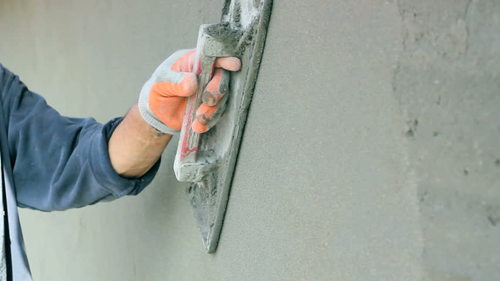Sorts Of Plaster And Its Employments
Plastering is the most established type of enhancing dividers. Today, there are many sorts of mortars in the commercial center, with totally different properties intended for various applications. Here is a speedy outline of the fundamental kinds of mortars:
- LIME mortars: lime mortars are the most established type of mortars. Their set of experiences returns around 7,000 years originating before the Romans and Egyptians. They are made from lime, sand, and water. Various totals can likewise be added to get specific beneficial properties (for example to make it milder, harder, water repellent, ready to set submerged, and so on) Lime has been broadly utilized consistently and has an exceptionally rich legacy. It is THE right material for old structures, basically, it is the most ideal decision for any structure worked before the 1900s.
- CEMENT mortars: the cutting edge elective, created in the second piece of the nineteenth century at the beginning of the Industrial Revolution. By adding dirt to lime and consuming it at a lot higher temperatures brings about a lot harder material. Cement is unsatisfactory for the redesign of old structures – the following section clarifies why.
- GYPSUM mortars: chiefly utilized as beautiful completions on top of different mortars, Being exceptionally delicate they have fantastic functionality bringing about plush completions. On the disadvantage: being so delicate, within the sight of moistness and salts they effectively separate.
Lime versus Cement – Which One is Better?
In the event that you have an old structure, odds are you have found out about the lime-cement banter, in particular, that “lime is acceptable” and “cement is terrible”. This isn’t exactly obvious. Both lime and cement mortars enjoy their benefits and disservices,. Both are appropriate for certain applications and unacceptable for other people. The fact is: they are altogether different.
Cement isn’t suggested for the redesign of old structures (for example the ones worked before the 1900s), rather lime is the suggested decision. To get why, we need to check out the central contrasts among more established and more up-to-date houses, on how they have been assembled.
Lime is the suggested decision for the maintenance and redesign of old structures since lime is:
Delicate: lime mortars are gentler than cement. Truth be told, their hardness can be controlled during the assembling system. Anyway whenever picked effectively, lime should be gentler than the blocks they tie together.
Envision lime mortar as an air pad on which blocks rest. Structures are dependent upon constant ground development and vibrations. Delicate padding can oblige this moment of development without breaking. Throughout the long term, the delicate lime will disintegrate yet it will secure the encompassing blocks, keeping the notable structure texture unblemished for quite a long time.
Cement Plaster then again is inflexible. It cracks seriously, giving water access, bringing about expanded clamminess and potential ice harm. Cement mortar being more earnestly than encompassing blocks will dissolve or break them, harming the milder noteworthy structure texture.
- BREATHABLE: on a sub-atomic level lime permits water fumes to vanish uninhibitedly, keeping its surface dry. Cement, then again, forestalls dissipation and traps moistness. Dampness under the cement mortar slowly develops, “intensifying” clamminess issues, aggravating them. The cement around lumber can prompt decay.
- WARM: lime having enormous air-filled pores, is a decent warm protector, making it a comfortable and warm material. Cement, being fundamentally denser with not many pores, it is a lot colder which frequently prompts buildup and shape issues.
- Hostile to BACTERIAL: lime being basic, it has normal antibacterial properties. It is a characteristic form executioner. A characteristic method of cleaning basements in the past was to paint them with lime wash.
- ECO-FRIENDLY: lime is eco-accommodating and carbon-unbiased. In the wake of arriving at its finish of life it tends to be reused: squashed and once again utilized for the following part of lime mortar. Cement isn’t reusable yet winds up in the landfills. It additionally has a weighty natural effect: the cement business produces 10% of worldwide man-made CO2 discharges. Weighty metals are likewise normally found in cement in non-unimportant fixations.
Why Is Cement Used in Old Buildings?
Regardless of large numbers of its benefits, lime mortars are as yet utilized significantly not as much as cement mortars. This occurs for a considerable length of time:
- History: before the turn of the century (the 1900s) lime was the “brilliant norm” for millennia. Then, at that point, cement has been created. Being waterproof, quick relieving, harder, fit for supporting bigger burdens, and so forth it immediately turned into the new “wonder material” permitting properties to be based on the modern scale: more, quicker, taller – something which was unrealistic with lime. Along these lines, lime has dropped out of style being to a great extent “neglected” for a long time. During this time the deficiencies of maturing cement became known – issues of sturdiness, breaking. helpless maturing and so forth – and after the 1980s the structure business began getting back to lime. Today lime is experiencing its subsequent Renaissance, turning out to be progressively famous once more,
- Absence of information/training: because of lime being to a great extent forgotten in the 1970-80-90s, numerous manufacturers and little dealers simply don’t have the foggiest idea or have never been educated with regards to lime as another option. So they simply use cement. As per client input, around 70% of the dealers/developers out there don’t work with lime, so we know on occasion it tends to be trying to track down the right merchant for your old structure project.
- Time considerations: lime fixes slower than cement, it needs more opportunity to dry. There are a 1-2 days stand-by period after each coat is applied. The cement then again sets inside a couple of hours, making conceivable a quicker turnaround between occupations. As “time is cash”, numerous manufacturers decide to utilize cement since it’s savvier to them; they can accomplish more positions quicker than expected. To find more about Wall Plaster click here!
However, things are gradually evolving. Increasingly assembling proprietors just as experts are becoming mindful of the genuine advantages of lime. Numerous legacy associations and gatherings -, for example, The SPAB, English Heritage, The National Trust, The Listed Property Owners Club (LPOC), The Lime Center and so on to give some examples – are making an enormous occupation in advocating lime, a vital fixing in better protecting our old structures for what’s to come.









